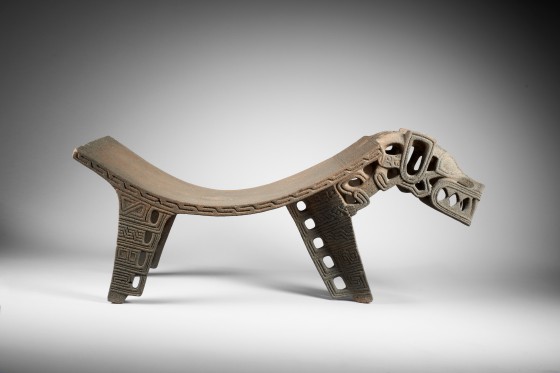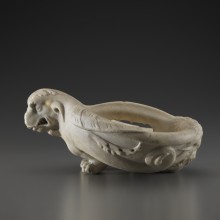
Ethnology
Objects from the pre-Columbian world and the distant islands of Oceania: in all, over four hundred objects that form a collection characterised by the variety and complementarity of its themes.
Shamanism and initiation rites are the two themes that structure the ethnological collection of the Fondation Gandur pour l’Art, through a presentation of Latin American cultures and Oceanic tribal art. This collection reflects the fascination exerted by the new worlds on the European continent.
Pre-Colombian archaeology
Pre-Columbian archaeology is represented by the objects that so wonderfully evoke the diversity of cultures that developed in Mesoamerica and South America, from the third millennium to the arrival of the Conquistadores. The Colima, Nayarit and Diquis cultures (to name but a few), the Olmec, Aztec and Mayan civilizations of Central America, and the Andean cultures of the Incas and Mochicas in South America, can be seen in the artefacts made from feathers, Tumbaga, terracotta and coloured stones. The collection is characterized by the variety of themes it addresses, and reflects cultures with powerful imaginations, where wildlife is omnipresent. An entire race of monkeys, seen here on a gold breastplate, there on a jade plate, amphibians, birds, big cats (especially the jaguar), reptiles and hybrid animals, such as the famous feathered coyote, have over time taken up residence in the collection.
The collection is also full of images of mere mortals, but which are no less representative of Pre-Colombian culture: the human being is a jewel, vase or whistle, and the shaman, caught in full metamorphosis, is transformed into a jaguar or an owl.
All of these objects bear witness to the concerns of mankind who, threatened by nature, took reassurance from the belief in powerful, bloodthirsty gods, who could be channelled through the mediation of complex rituals, such as the Mayan ball game. The artefacts also evoke, oftentimes with humour, the reality of man’s daily life at that time.
Oceanic tribal art
These tribal artefacts from all over the Oceanic region often arrived in Europe by means of the intrepid European travellers who journeyed across the seas of the southern hemisphere as early as the mid-19th century… Examples include the conch shell brought back by the Commodore Abel Aubert du Petit-Thouars, assigned to the Marquesas Islands from 1841 to 1846.
The objects from this collection are not only proof of the fascination held by Europeans for these tribal artefacts. They are also representative of a certain dreamlike dimension for the cultures from which they came: masks of forest spirits and animal totems, chief’s sceptres and ceremonial lime spatulas all evoke a strange and surprising world and bear witness to the remarkable tribal cultures of the late 19th century.
Dr Isabelle Tassignon
Curator Archaeology and Ethnology Collections






